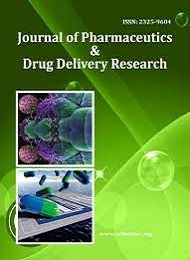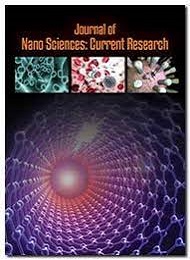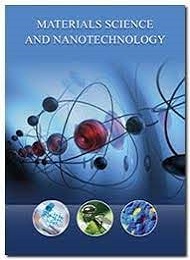Theme: Nanomedicine & Nanotechnology: A prominent epitomes in Pharmaceutical Sciences
Nano Pharmaceuticals 2023
- About Conference
- Why to Attend ??
- Sessions/ Tracks
- Market Analysis
- VISA-TripAdvisor
- Past Conference Report
Conference series LLC Ltd is very excited to welcome participants to 5th International Conference and Exhibition on Pharmaceutical Nanotechnology and Nanomedicine scheduled during July 31-August 01, 2023, Vancouver, Canada.
Nano Pharmaceuticals 2023 will illustrate innovative research ideas on Nano medicine & Nanotechnology, Pharmaceutical Technology, Drug Delivery, Medical Devices for Drug Delivery, Biotechnology ,Nano robots and Formulation Technology, This conference presents a fantastic line-up for many international experts such as Professors and Ph.D Scholars from academia, Clinicians, R&D Scientists, CEOs, CROs, CMOs, Director, President from Pharmaceutical Companies, Manufacturers, Distributors and Suppliers of Drug Delivery Technologies, Business Entrepreneurs, Health professionals & Pharmacist, Quality control specialist. It provides interdisciplinary platform to present and discuss the most recent innovations, trends as well as practical challenges encountered and solutions adopted in the fields Nanomedicine & Nanotechnology.
The global Nanomedicine market is estimated to reach USD 170 Billion in 2021, growing at a CAGR of 8.9% from 2016 to 2024, according to market research report Nanomedicine Market 2016-2024.
|
Conference Name |
Venue |
Dates |
|
Vancouver, Canada |
July 31-August 01,2023 |
Top Reasons to Attend
- A unique opportunity to discuss issues of importance and relevance to advancing pharmacy practice through continuous professional development.
- The conference is of interest to all those in the Continuing Education/Professional Development experience, including pharmacists, developers, sponsors, faculty, regulators, government, professional associations, pharmaceutical industry, communication companies, and allied health care providers and organizations from around the world.
- Meet with key decision makers in the pharmaceutical industry worldwide and learn about the latest innovations, technologies, trends and developments in pharmaceutical industry.
- Network and gain access to one of the world's fastest growing pharmaceutical markets.
- A momentum is growing world-wide that recognizes the integral role of continuing professional development in Pharmaceutical Industry, and the value of sharing experiences and knowledge in an international, collegial forum.
- The conference facilitates participant access to high quality educational programs, internationally significant research and development, and world-renowned leaders in the Pharmaceutical field.
- This is the only event featuring renowned speakers and delegates and expertise on the topics you care about most
Target Audience
- Professors, Associate Professors, Asst Professors
- PhD Scholars
- Graduates and Post Graduates
- Directors, CEO’s of Organizations
- Association, Association presidents and professionals
- Noble laureates in Health Care and Medicine
- Bio instruments Professionals
- Research Institutes and members
- Supply Chain companies
- Manufacturing Companies
- Training Institutes
- Business Entrepreneurs
Exhibition:
Why exhibit?
- Make sales
- Debut new products
- Profile your brand
- Meet new business partners and suppliers
- Develop key relationships
Educate medical, healthcare, pharma and biotech institutions and academia
Who you will meet?
Leaders in:
- Nanomedicine
- Biomedical sciences
- Drug Delivery
- Formulation
- Drug Development
- Nanotechnology
- QbD
- Delivery Devices
- Bioavailability
- New Products
- Pre-Formulation
- Process R&D
- CMC
Track 1: Nanoparticles and Nanomedicine
Nanomedicine is a branch of medicine that applies the knowledge and tools of nanotechnology in the prevention and treatment of diseases. Nanomedicine involves the use of nanoscale materials, such as biocompatible nanoparticles and Nano robots, for diagnosis, delivery, sensing or actuation purposes in a living organism. Nanoparticles with ~100 nanometers have been widely used to improve the drug accumulation, internalization and therapeutic efficacy. The physicochemical and biological properties of the Nanoparticles can also be finely adjusted by tailoring their chemical properties, sizes, shapes, structures, morphologies, and surface properties. Nanomedicine is the medical application of Nanotechnology. Nanotechnology has provided the possibility of delivering drugs to specific cells using nanoparticles. Current problems for nanomedicine involve understanding the issues related to toxicity and environmental impact of nanoscale materials.
Nanomedicine seeks to deliver a valuable set of research tools and clinically useful devices in the near future. The National Nanotechnology Initiative expects new commercial applications in the pharmaceutical industry that may include advanced drug delivery systems, new therapies, and in vivo imaging.
Track 2: Pharmaceutical Nanotechnology
Pharmaceutical Nanotechnology based system deals with emerging new technologies for developing customized solutions for drug delivery systems. The drug delivery system positively impacts the rate of absorption, distribution, metabolism, and excretion of the drug or other related chemical substances in the body. In addition to this the drug delivery system also allows the drug to bind to its target receptor and influence that receptor’s signaling and activity. Pharmaceutical nanotechnology embraces applications of nanoscience to pharmacy as nanomaterials, and as devices like drug delivery, diagnostic, imaging and biosensor.
Track 3: The Evolution of Nanomedicine with the Re-Evolution of Nanotechnology
Nanotechnology seems to have gained a widespread interest in the recent years. Nanotechnology has considerably accelerated the growth of regenerative medicine the past few years. Application of Nanotechnology in regenerative medicine has revolutionized the designing of grafts and scaffolds which has resulted in new grafts/scaffold systems having significantly enhanced cellular and tissue regenerative properties. Since the cell–cell and cell-matrix interaction in biological systems takes place at the nanoscale level, the application of nanotechnology gives an edge in modifying the cellular function and/or matrix function in a more desired way to mimic the native tissue/organ. Nanomedicine introduces Nanotechnology concepts into medicine and thus joins two large cross disciplinary fields with an unprecedented societal and economical potential arising from the natural combination of specific achievements in the respective fields.
Track 4: Nanomedicine and Nanobiotechnology
Nanotechnology is universally recognized as one of the most important scientific fields of the twentyâ€first century. Biomedical applications of this technology offer great promise in finding new approaches to repairing damaged tissues and curing disease. Nanomedicine and Nanobiotechnology will address key topics from the perspectives of medicine, biology, physics, chemistry, and engineering, and serve as an encyclopedic reference for Nanomedicine and Nanobiotechnology research.
Track 5: Nanorobotics and Nanomedicine
Nanomedicine will be based on the ability to build Nanorobots. In the future these Nanorobots could actually be programmed to repair specific diseased cells, functioning in a similar way to antibodies in our natural healing processes. The motivation for the new manipulation technology is the desire to enter the micro- and Nanoworld not only by viewing but also acting, altering micro- and nanosized objects. A new era on medicine are expected to happen in the coming years. Due to the advances in the field of Nanotechnology, Nanodevice manufacturing has been growing gradually. The elimination of bacterial infections in a patient within minutes, instead of using treatment with antibiotics over a period of weeks.
Track 6: Smart Drug Delivery Technology
Some smart drug delivery platform is based on neutral phospholipid Nanoliposomes. Where classic Classic liposomes modalities have had manufacturing problems involving sizing, uniformity, loading, storage, and enhancement compatibility, which can be overcome by employing true nanotechnology to build liposomes upon discrete self-assembling DNA scaffolds. The smart drug delivery system is used for delivering drugs to the host. Biological information detected by biological sensors is analyzed and the drug delivery system is actuated to deliver the drug based on the information. MEMS or NEMS technology based drug pumps, micro-pumps, micro-needles, micro-osmotic pumps, and nano-pumps are utilized for smarter drug delivery. One of the concerns these days about self-assembling nanotechnology is that it is so advanced beyond the current drug paradigm that it becomes problematic from a regulatory point of view. While there is currently no drug treatment delivered directly into these types of cancers.
Track 7: Computational Studies in Nanoparticles
The computational studies in nanoparticles have demonstrated that there has been considerable progress in Nano and biotechnology in the last several years. However, several key challenges have also become apparent, including the need for a better understanding of nanoparticle behaviour in vivo and the development of more effective nanoparticle therapeutics. Computational efforts are becoming an important tool in addressing both of these challenges, as well as in generally facilitating and accelerating nanotechnology-based translational research. The Nanoinformatics has come out as a new research area that covers raw data management, analysis of the data derived from biomedical applications and simulation of nanoparticle interactions with biological systems depicting the integration of biology, nanotechnology and informatics to form the basis for computational Nanomedicine.
Track 8: Research and Development of Nanomedicine
Nanomedicine has been developing rapidly in recent years, particularly in the development of novel Nano tools for medical diagnosis and treatment. For instance, a new trend is becoming prevalent in developing Nanosystems for simultaneous tumour diagnosis and therapy. A new terminology "Theranostics" has been frequently used and applied in pre-clinical research and trials. A Nanosystem can simultaneously achieve both cell targeted in vivo imaging and photothermal treatment of cancer. While achieving concurrent high spatial and temporal resolution of the lesions via cell targeting; special non-evasive treatments are implemented at the same time by various means, such as localized drug release, hyperthermia, and photo-thermal therapy. Inspired by these challenging problems in biomedical fields, the development of the nanotechnologies will be the key in addressing some of the critical issues in medicine, especially in early cancer diagnosis and treatment.
Track 9: Nanoparticles as Precise Drug Delivery Systems
With the remarkable development of Nanotechnology in recent years, new drug delivery approaches based on the state-of-the-art nanotechnology have been receiving significant attention. Nanoparticles, an evolvement of nanotechnology, are increasingly considered as a potential candidate to carry therapeutic agents safely into a targeted compartment in an organ, particular tissue or cell. These particles are colloidal structures with a diameter less than 1,000 nm, and therefore can penetrate through diminutive capillaries into the cell’s internal machinery. This innovative delivery technique might be a promising technology to meet the current challenges in drug delivery. The different types of nanoparticles drug delivery systems under investigation and their prospective therapeutic applications, and also present a closer look at the advances, current challenges, and future direction of nanoparticles drug delivery systems.
Track 10: Polymer Nanoparticles for Nanomedicines
The use of nanoscale materials and processes to address human disease is perhaps the most promising, considering that most complex downstream symptoms of disease are initiated by molecular level phenomena. Nanomedicine is defined as biological and medical intervention at the nanometer scale for the treatment, diagnosis, and increased understanding of biology and disease. Tremendous advances in the area of polymer synthesis and self-assembly have given rise to a new toolbox of engineered nanosized delivery and diagnostic agents that permit systemic and local administration, circulation in the bloodstream, and uptake and diffusion at the cellular and subcellular level.
Track 11: Design and Characterization of Nano Drug Systems
Recent years have witnessed the rapid development of inorganic nanomaterials for medical applications. At present, nanomedicines-nanoparticles (NPs) destined for therapy or diagnosis purposes-can be found in a number of medical applications, including therapeutics and diagnosis agents .Pushing the limits of nanotechnology towards enhanced Nanomedicines will surely help to reduce side effects of traditional treatments and to achieve earlier diagnosis. The interplay between engineered nanomaterials and biological components is influenced by complex interactions which make predicting their biological fate and performance a nontrivial issue. We hope that both early-stage and experienced researchers will find it valuable for designing nanoparticles for enhanced bio-performance. Nanoemulsions have attracted great attention in research, dosage form design and pharmacotherapy. This is as a result of a number of attributes peculiar to nanoemulsions.
Track 12: Toxicology of Nanoparticles
Nanotechnology is a rapidly growing field having potential applications in many areas. Nanoparticles have been studied for cell toxicity, immunotoxicity, and genotoxicity. Tetrazolium-based assays such as MTT, MTS, and WST-1 are used to determine cell viability. Different types of cell cultures, including cancer cell lines have been employed as in vitro toxicity models. Considering the potential applications of NPs in many fields and the growing apprehensions of FDA about the toxic potential of Nanoproducts, it is the need of the hour to look for new internationally agreed, free of bias toxicological models by focusing more on in vivo studies. The rapid expansion of nanotechnology promises to have great benefits for society, yet there is increasing concern that human and environmental exposure to engineered nanomaterials may result in significant adverse effects. The system was developed for Nanotoxicity assessment at single and multiple cell levels which can measure and compare the microscopic and macroscopic effects of nanoparticles interaction with cells, without interference from neighbouring cells' cues and also overall integrative effects produced by nanoparticles and cell–cell communication.
Track 13: Emerging Nanomedicine
Currently, the treatment of HIV requires regular oral dosage of HIV drugs, and chronic oral dosing has significant complications that arise from the high pill burden experienced by many patients across populations with varying conditions leading to non-adherence to therapies. Recent evaluation of HIV patient groups have shown a willingness to switch to nanomedicine alternatives if benefits can be shown. Research efforts by the Liverpool team have focused on the development of new oral therapies, using Solid Drug Nanoparticle (SDN) technology which can improve drug absorption into the body, reducing both the dose and the cost per dose and enabling existing healthcare budgets to treat more patients.
Track 14: Pharmaceutical Formulations
Formulation studies involve developing a preparation of the drug which is both stable and acceptable to the patient. For orally administered drugs, this usually involves incorporating the drug into a tablet or a capsule. It is important to make the distinction that a tablet contains a variety of other potentially inert substances apart from the drug itself, and studies have to be carried out to ensure that the encapsulated drug is compatible with these other substances in a way that does not cause harm, whether direct or indirect. Formulation studies also consider such factors as particle size, polymorphism, pH, and solubility, as all of these can influence bioavailability and hence the activity of a drug. The drug must be combined with inactive ingredients by a method which ensures that the quantity of drug present is consistent in each dosage unit e.g. each tablet. The dosage should have a uniform appearance, with an acceptable taste, tablet hardness, or capsule disintegration. By the time phase III clinical trials are reached, the formulation of the drug should have been developed to be close to the preparation that will ultimately be used in the market.
Track 15: Applied Pharmaceutical Science
Pharmacy is the science and technique of preparing and dispensing drugs. It is a health profession that links health sciences with chemical sciences and aims to ensure the safe and effective use of pharmaceutical drugs. A theory relating chemical structure to pharmaceutical activity emerged from the interplay of experimental results from animal and human tests using vaccines, antitoxins, and antibodies with chemical knowledge about dyes and their molecular structures. Although pharmacology is essential to the study of pharmacy, it is not specific to pharmacy. Pharmacoinformatics is considered as another new discipline, for systematic drug discovery and development with efficiency and safety. The progressively more important role of the chemist and chemical science in pharmaceuticals in the early-20th century is mirrored in the history of the American Chemical Society's Division of Medicinal Chemistry
Universal Market for Nanotechnology products was evaluated $22.9 billion in 2015and unanticipated grow to about $26 billion in 2018. This market is await to reach about $64.2 billion by 2020 a compound annual growth rate (CAGR) is 19.8% from 2015 to 2022. The global market for nanotechnology-enabled printing technology was approximate to be at total $14 billion in 2019. The market is anticipate to grow at a compound annual growth rate (CAGR) of 17.7% over the next five years and to total $31.8 billion by 2025.
Planning a Trip to Vancouver, Canada!!! Attending Meeting!!!
An issue with VISA!!
Nano Pharmaceuticals 2023 Committee will be happy to help you in all regards to plan your trip to Vancouver, Canada. Avail the official invitation letter from us to attend this event ahead with a closer step for approval of your VISA.
Find out what you need to do to visit Canada as a tourist or business person, how to extend your stay in Canada and what documents you need to carry with you to transit through Canada.
Application submission:
Canada does not have a visa office in every country so it is important that Delegates/Attendees visit the website of the visa office responsible for processing their visa applications. Information is available on the website on how to submit a visa application and the documentation required.
Delegates/Attendees are encouraged to submit their visa applications well in advance of the date of the event at a Visa Application Centre or on-line E-applications (e-Apps).
E-Apps
This system allows clients to submit applications online.
Delegates/Attendees that need a visa but require their passport for other travel purposes are strongly encouraged to submit their visa applications online (e-Apps). Delegates/Attendees that choose to apply online will not have to submit their passport until a decision has been taken on their applications. If required, the visa office will send the applicant instructions on how and where to send their passports to finalize the visa process.
Visa Application Centres (VACs):
VACs are commercial service providers authorized by Canada to provide specific services to applicants.
VACs provide a number of services including help applicants fill out forms, answer questions and ensure that applications are complete, thereby reducing unnecessary delays or refusals due to incomplete applications.
Applicants that are required to provide biometrics information as part of the visa application process can do so at a VAC. Additional information on the biometrics requirements is available at the IRCC website.
VACs send applications to Visa Offices and transmit decisions to applicants in a secure and confidential manner. VACs do not process visa applications and play no role in the decision-making process.
Visa Applications Processing Time:
Processing time for visa applications vary depending on the office and the time of the year. Participants should be encouraged to apply early for their visas, and to submit complete applications including all supporting documents.
Please visit the IRCC website for information on the time it takes to process visa applications at the various visa offices.
NEW - Electronic Travel Authorization (eTA)
As of March 15, 2016, visa-exempt foreign nationals are expected to have an Electronic Travel Authorization (eTA) to fly to or transit through Canada. Exceptions include U.S. citizens and travelers with a valid Canadian visa. Canadian citizens, including dual citizens, and Canadian permanent residents are not eligible to apply for an eTA.
However, from March 15, 2016, until fall 2016, travellers who do not have an eTA can board their flight, as long as they have appropriate travel documents, such as a valid passport. During this time, border services officers can let travellers arriving without an eTA into the country, as long as they meet the other requirements to enter Canada. We invite you to consult the IRCC website regularly for information updates on eTA.
We gratefully thank all our wonderful Speakers, Conference Attendees, Students, Media Partners, and Associations for making Nano Pharmaceuticals 2021 Conference the best ever!
Conference Series LLC Ltd successfully hosted its premier 4th International Conference and Exhibition on Pharmaceutical Nanotechnology and Nanomedicine during September 16, 2022, Webinar. The conference brought together a broad spectrum of the Nano education community, educators from research universities with their programs and state colleges from across the world, as well as representatives from industry and professional environmental societies.
The 4th International Conference and Exhibition on Pharmaceutical Nanotechnology and Nanomedicine was based on the theme “"Nanomedicine & Nanotechnology: A prominent epitomes in Pharmaceutical Sciences "” which has covered the below scientific sessions:
- Nanoparticles and Nanomedicine
- Pharmaceutical Nanotechnology
- Nanomedicine and Nano biotechnology
- Nanorobotics and Nanomedicine
- Smart Drug Delivery Technology
- Computational Studies in Nanoparticles
- Research and Development of Nanomedicine
- Nanoparticles as Precise Drug Delivery Systems
- Polymer Nanoparticles for Nanomedicines
Keynote Presentation on:
-
Indigenous Use Of Medicinal Plants For Dgestive Problems In Punjab,
by Jiwan Jyoti, Punjab Agricultural University, India -
Design, Synthesis, Molecular Characterization And Biological Activity Of Novel Synthetic Peptide Derivatives,
by Gaber O. Moustafa, National Research Centre, Cairo, Egypt
Speakers Presentation on:
-
Development And Validation Of HPLC Method-A Review,
by Muhammad Jehangir, Novamed Group, Pakistan -
Antiviral Activity Of Green Silver Nanoparticles Produced Using Aqueous Buds Extract Of Syzygium Aromaticum,
by Humayun Riaz, Rashid Latif College of Pharmacy, Pakistan -
Nano-Formulation Can Potentially Increase Bioavailability Of Effective Drug In Brain,
by Mamata Mishra, Jai Research Foundation, India -
Characterization And Release Profile Of Hybrid PLGA-Lipid Nanoparticles Of 5-Flurouracil: Superior Chemotherapeutic Potential And p53 Expression In Mammary Tumors,
by Sawsan Zaitone, University of Tabuk, Saudi Arabia -
Characterization Of Oil In Water Hemp Seed Oil Nanoemulsions With A Protective Effect Against Steatohepatitis,
by Hatem I. Mokhtar, Sinai University, Egypt -
Biogenic Zinc Oxide Nanoparticles Synthesized From Swertia Chirayita Leaf Extracts And Their Cytotoxic Effect On Colorectal Cancer Cells,
by Hadgu Mendefro Berehu, KIIT university, India -
Pushing Biomaterial Boundaries: Nanomedicine, Global Warming, Tissue Engineering, Fighting COVID-19 and More,
by Thomas J. Webster, University of Pittsburgh, USA
Nano Pharmaceuticals 2022 is known for uplifting the future of Nano technology and Nano medicine by encouraging students and fellow researchers to present their work through Young Research Forum and Poster Presentations. Students participated with great zeal and the best researches were awarded for their efforts and outstanding contribution.
Last but not the least Conference Series LLC Ltd wishes to acknowledge with its deep sincere gratitude to all the supporters from the Editorial Board Members of our Open Access Journals, Keynote Speakers, Honorable Guests, Valuable speakers, Poster presenters, students, delegates and special thanks to the Media partners for their promotion to make this event a huge success.
With the enormous feedback from the participants and supporters of Nano Pharmaceuticals 2022, Conference Series LLC Ltd is glad to announce its 5th International Conference and Exhibition on Pharmaceutical Nanotechnology and Nanomedicine (Nano Pharmaceuticals 2023)
See you soon @
Nano Pharmaceuticals 2023!!
Conference Highlights
- Nanoparticles and Nanomedicine
- Pharmaceutical Nanotechnology
- The Evolution of Nanomedicine with the Re-Evolution of Nanotechnology
- Nanomedicine and Nanobiotechnology
- Nanorobotics and Nanomedicine
- Smart Drug Delivery Technology
- Computational Studies in Nanoparticles
- Research and Development of Nanomedicine
- Nanoparticles As Precise Drug Delivery Systems
- Polymer Nanoparticles for Nanomedicines
- Design and Characterization of Nano Drug Systems
- Toxicology of Nanoparticles
- Emerging Nanomedicine
- Pharmaceutical Formulations
- Applied Pharmaceutical Science
To share your views and research, please click here to register for the Conference.
To Collaborate Scientific Professionals around the World
| Conference Date | July 31-01, 2023 | ||
| Sponsors & Exhibitors |
|
||
| Speaker Opportunity Closed | Day 1 | ||
| Poster Opportunity Closed | Click Here to View | ||
Useful Links
Special Issues
All accepted abstracts will be published in respective Our International Journals.
- Journal of Nanosciences: Current Research
- Materials science and nanotechnology
- Journal of materials science and nanomaterials
Abstracts will be provided with Digital Object Identifier by















